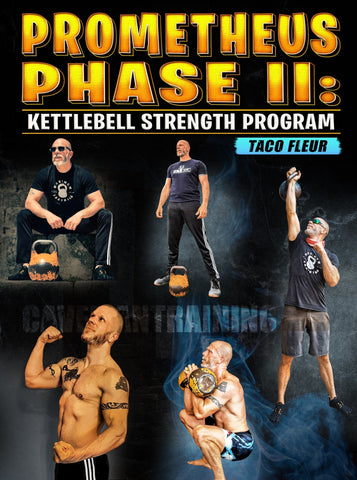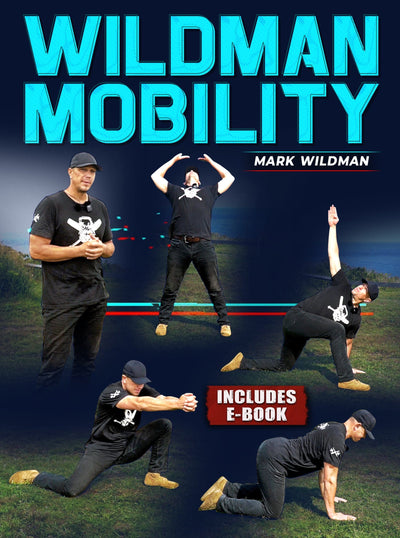The American Kettlebell Swing
Kettlebells, with their origins dating back to 18th-century Russia, have evolved from humble counterweights for crops into a versatile and indispensable tool in the world of fitness. The American Kettlebell Swing, in particular, stands out as a dynamic and impactful exercise that blends strength and cardio, offering a host of benefits for enthusiasts and athletes alike.
What this article covers:
- Background of Kettlebells
- Benefits of Using Kettlebells
- How to Perform the American Kettlebell Swing
- Safety Concerns
In this exploration, we'll delve into the rich history of kettlebells, elaborate on the manifold advantages they bring to the fitness table, provide an in-depth guide on how to perform the American Kettlebell Swing with precision, and underscore the critical safety considerations that underpin any effective kettlebell training regimen. Whether you're a seasoned kettlebell practitioner or just beginning your fitness journey, understanding the background, benefits, proper technique, and safety precautions of the American Kettlebell Swing will empower you to unlock its full potential and achieve your fitness goals safely and effectively.
Background of Kettlebells
Kettlebells have a rich history dating back to 18th-century Russia, where they were originally used as counterweights for crops in markets. Over time, they evolved into a versatile and effective training tool, gaining popularity in Eastern Europe for their ability to develop strength and endurance. Kettlebell workouts were later introduced to the United States in the 20th century, and they have since become a staple in fitness routines worldwide.
Benefits of Using Kettlebells
Kettlebells are an exceptional fitness tool known for their versatility and effectiveness. Understanding the range of benefits they offer can help you appreciate why they have become a staple in fitness routines:
Full-Body Workout: One of the most significant advantages of kettlebell training is that it engages multiple muscle groups simultaneously. The American Kettlebell Swing, for example, works the glutes, hamstrings, quads, lower back, core, shoulders, and forearms, offering a comprehensive full-body workout.
Efficiency: The American Kettlebell Swing is a compound exercise that combines strength and cardio, making it a time-efficient choice for those with busy schedules. With just one exercise, you can target various muscle groups and boost your heart rate, burning calories and improving cardiovascular fitness.
Cardiovascular Benefits: Kettlebell exercises like the swing elevate your heart rate and keep it elevated throughout the workout. This helps improve cardiovascular endurance, making it an excellent choice for those looking to enhance their cardiovascular fitness.
Functional Strength: Kettlebell movements replicate real-world activities, making the strength gained from kettlebell training highly practical. Whether you need to lift heavy objects, carry groceries, or play sports, the functional strength gained through kettlebell workouts can greatly improve your everyday performance.
Versatility: Kettlebells offer a wide range of exercise options. In addition to the American Kettlebell Swing, you can perform exercises like the Turkish Get-Up, Goblet Squats, and Kettlebell Snatches, catering to different fitness levels and goals. This versatility ensures that your workouts remain engaging and effective.
Improved Posture and Core Strength: Kettlebell training places a strong emphasis on core stability and posture. As you perform exercises like the American Kettlebell Swing, your core muscles work hard to maintain proper alignment, leading to improved posture and reduced risk of back pain.
How to Perform the American Kettlebell Swing
Mastering the American Kettlebell Swing requires precise form and technique. Here's a step-by-step guide to help you perform this exercise effectively and safely:
Select the Right Kettlebell: Start by choosing an appropriate kettlebell weight. For beginners, it's recommended to use a lighter kettlebell to focus on mastering the form.
Starting Position:
Stand with your feet shoulder-width apart, positioning the kettlebell on the floor in front of you. Bend at your hips and knees to grasp the kettlebell handle with both hands.
Swinging Motion:
Engage your core and initiate the movement by hiking the kettlebell backward between your legs. Keep your back flat and chest up. Explosively extend your hips and knees while maintaining a neutral spine to swing the kettlebell forward. Imagine you are using your hips to thrust the kettlebell upwards.
End Position:
At the top of the swing, the kettlebell should reach chest height. Your arms should be fully extended, and your body should form a straight line from head to heels. Avoid overextending your lower back.
Controlled Descent:
As the kettlebell descends, hinge at your hips, keeping your back straight, and guide the kettlebell between your legs. It's crucial to maintain control during the descent to avoid injury.
Repetition and Breathing: Perform the swing in a controlled, rhythmic manner. Exhale as you swing the kettlebell up and inhale as it descends.
Sets and Repetitions: The number of sets and repetitions can vary depending on your fitness level and goals. A typical starting point is 3-4 sets of 10-15 repetitions.
Remember, it's essential to focus on proper form and gradually increase the weight of the kettlebell as you become more proficient. Always prioritize safety, and if you're new to kettlebell training, consider seeking guidance from a certified fitness professional to ensure that your form is correct and to prevent any risk of injury.
Safety Concerns
While the American Kettlebell Swing offers numerous benefits, it's essential to pay attention to safety to prevent injuries:
Proper Form: Maintain proper form at all times to protect your lower back. Avoid rounding your back and ensure your core is engaged throughout the exercise.
Start Light: If you're new to kettlebell training, begin with a lighter kettlebell to practice the swing and develop the necessary strength and technique.
Warm-Up: Always warm up before starting your kettlebell workout to prepare your muscles and reduce the risk of strains.
Progress Gradually: Increase the weight of the kettlebell gradually as your strength and proficiency improve.
Listen to Your Body: Pay attention to your body and stop immediately if you feel any pain or discomfort. Consult a fitness professional for guidance if needed.
In conclusion, the American Kettlebell Swing is a dynamic and effective exercise that offers numerous physical benefits. When performed with proper form and safety precautions, it can be a valuable addition to your fitness routine, helping you build strength, endurance, and functional fitness. Always prioritize safety and technique to make the most of this powerful exercise.
Upgrade Your Kettlebell Routine With The EXPERTS At Strong and Fit!
Did you find the blog helpful? If so, consider checking out other guides:
- The World of Russian Kettlebell Workouts
- Mastering the Russian Kettlebell Challenge
- The Double Kettlebell Russian Swing and Its Variations
- The Russian Kettlebell Swing in CrossFit Community and Competition
- Russian Twists with Kettlebell
- The Russian Kettlebell Swing
- Shedding Pounds with Kettlebell Workouts
- Elevating Your Cardio with Kettlebell Workouts
- Kettlebell Swings for Fat Loss
- The Kettlebell HIIT Workout
- A Beginner Kettlebell Workout
- Kettlebells Workout for Beginners
- Kettlebell Weight for Beginners
- Kettlebell Workouts for Female Beginners
- Advanced Kettlebell Workout





